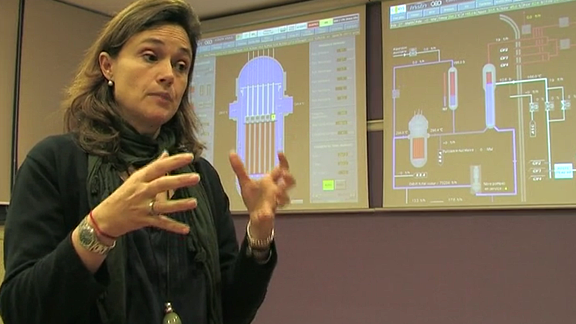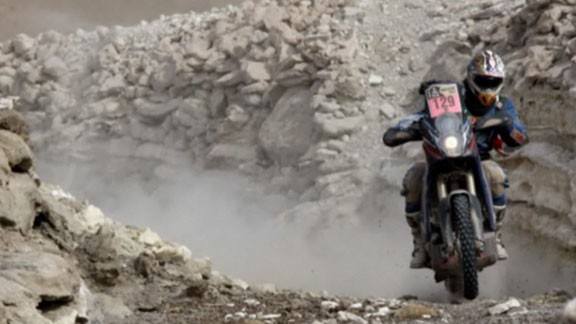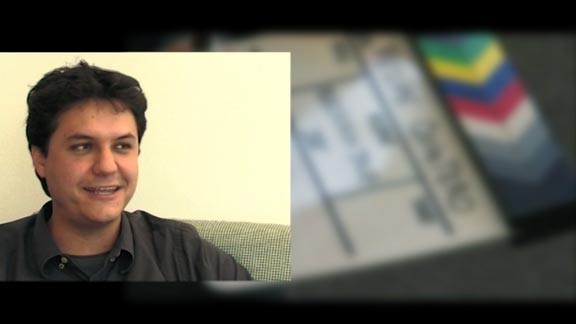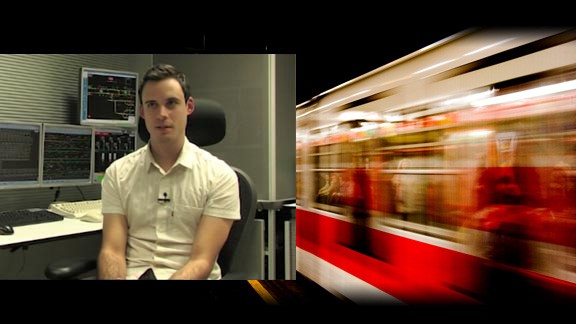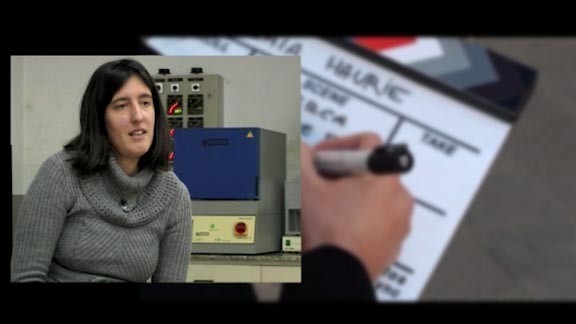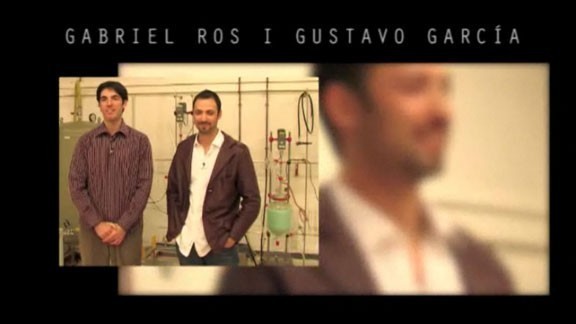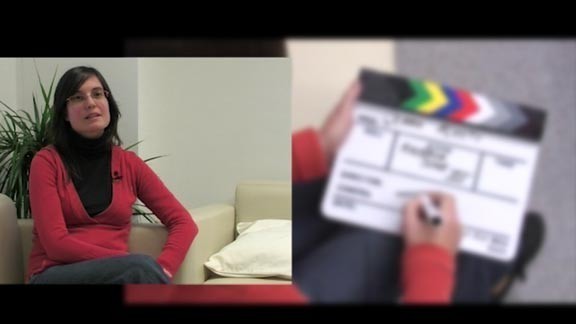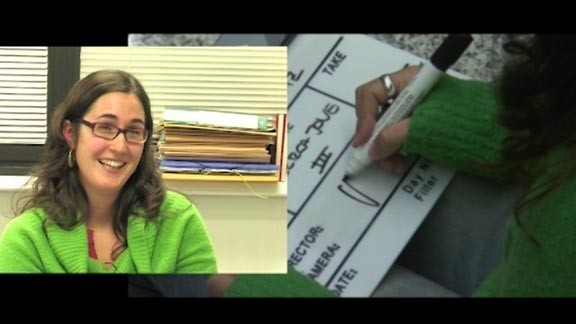Objectes multimèdia amb l’etiqueta: Servei de Comunicació
Resultats de la cerca
Passió pel coneixement
Accés obert
5 d’abr. 2011
Passió, innovació, il·lusió, motivació, qualitat, creativitat, flexibilitat, perseverança, paciència, iniciativa, adaptabilitat, lideratge, dinamisme, autonomia, confiança, responsabilitat, emoció, fortalesa, senzillesa, coneixement.
Aquests són els valors que impregnen l’activitat de recerca dels joves investigadors i investigadores de la UPC: a la sèrie audiovisual UPC Recerca Jove ens expliquen, en primera persona, la seva implicació en la recerca, des d’un punt de vista professional, però també emocional.
Amb motiu de l’estrena de 10 vídeos més de la sèrie audiovisual UPC Recerca Jove, aquest clip recull el testimoni d’alguns d’aquests joves investigadors: per què han decidit dedicar-se a la recerca? Què els va enganxar? Qui els va animar? Què els aporta? Què poden oferir a les empreses?
Amb l’edició dels nous curtmetratges, el projecte UPC Recerca Jove ofereix més de 50 clips de divulgació científica protagonitzats per joves investigadors que presenten, amb passió, la seva feina. El projecte UPC Recerca Jove, amb una clara vocació divulgativa, té un doble objectiu: d’una banda donar a conèixer a la societat quina és la recerca estratègica que duen a terme els joves investigadors i investigadores de la Universitat i, de retruc, despertar noves vocacions científiques. La sèrie audiovisual pretén també fer un reconeixement públic als joves investigadors i als seus equips de recerca per una feina no sempre coneguda, ni reconeguda, per la societat.
Aquests són els valors que impregnen l’activitat de recerca dels joves investigadors i investigadores de la UPC: a la sèrie audiovisual UPC Recerca Jove ens expliquen, en primera persona, la seva implicació en la recerca, des d’un punt de vista professional, però també emocional.
Amb motiu de l’estrena de 10 vídeos més de la sèrie audiovisual UPC Recerca Jove, aquest clip recull el testimoni d’alguns d’aquests joves investigadors: per què han decidit dedicar-se a la recerca? Què els va enganxar? Qui els va animar? Què els aporta? Què poden oferir a les empreses?
Amb l’edició dels nous curtmetratges, el projecte UPC Recerca Jove ofereix més de 50 clips de divulgació científica protagonitzats per joves investigadors que presenten, amb passió, la seva feina. El projecte UPC Recerca Jove, amb una clara vocació divulgativa, té un doble objectiu: d’una banda donar a conèixer a la societat quina és la recerca estratègica que duen a terme els joves investigadors i investigadores de la Universitat i, de retruc, despertar noves vocacions científiques. La sèrie audiovisual pretén també fer un reconeixement públic als joves investigadors i als seus equips de recerca per una feina no sempre coneguda, ni reconeguda, per la societat.
BWR: pressió i tensió al límit
Accés obert
23 de març 2011
“Amb tantes milles per recórrer fins a la meta, és difícil valorar el risc o els avantatges de les nostres decisions”, afirma el patró d’un dels equips que competeix a la Barcelona World Race. Cansats, esgotats, arrossegant lesions, resistint amb calmants, fent front a avaries enmig de fortes tempestes o patint, fins i tot, racionament en el menjar, els navegants -enmig de la tensió i la pressió- tenen constants dubtes a l'hora de prendre les decisions. I és que, més enllà de la seva capacitat de navegació, aquesta regata és un competició de resistència física i psicològica, de precisió tècnica, d’estratègia, d’esforç i de treball en equip.
Coincidint amb la Barcelona World Race, la UPC i la Fundació per a la Navegació Oceànica de Barcelona han convocat el 1r Premi UPC-Barcelona World Race: innovació, navegació i entorn. Aquest Premi ha permès a set estudiants de la UPC, finalistes d’aquest concurs d’idees, desenvolupar durant tres mesos els seus projectes en col·laboració amb les escuderies de la regata. Tots saben que el termini per finalitzar el seu projecte s'acaba a les 24 h del dia d’arribada del primer vaixell en competició: el compte enrere ja ha començat
Coincidint amb la Barcelona World Race, la UPC i la Fundació per a la Navegació Oceànica de Barcelona han convocat el 1r Premi UPC-Barcelona World Race: innovació, navegació i entorn. Aquest Premi ha permès a set estudiants de la UPC, finalistes d’aquest concurs d’idees, desenvolupar durant tres mesos els seus projectes en col·laboració amb les escuderies de la regata. Tots saben que el termini per finalitzar el seu projecte s'acaba a les 24 h del dia d’arribada del primer vaixell en competició: el compte enrere ja ha començat
Fukushima: claus per entendre l'alarma nuclear
Accés obert
16 de març 2011
El terratrèmol i el tsunami del passat 11 de març a Japó i el posterior accident a la central nuclear de Fukushima ha generat un gran debat en la indústria nuclear. Actualment, funcionen al món 435 reactors nuclears, segons l’Informe sobre l’estat mundial de la indústria nuclear 2009, i el seu període mitjà d’explotació és de 25 anys.
Carme Pretel, investigador i professora del Departament de Física i Enginyeria Nuclear Obre en finestra nova explica en aquest vídeo tots els detalls de l’accident a Fukushima i què s’està fent per controlar la situació. En aquest sentit, Carme assegura que la planta nuclear va respondre amb seguretat davant el terratrèmol, però que no va poder fer front al tsunami posterior amb onades d’entre 7 i 9 metres, que superaven les previsions de disseny de la central.
En l’àmbit de l’enginyeria de seguretat nuclear, el Departament de Física i Enginyeria Nuclear de la Politècnica participa en la simulació d’esdeveniments que puguin constituir una amenaça per a aquestes barreres de seguretat i en l’establiment de protocols d’actuació. Aquesta simulació d’escenaris es fa a través d’un programa de càlcul que permet desenvolupar models de plantes nuclears i estudiar-ne el comportament en diferents supòsits que s’han produït o es podrien produir.
Carme Pretel, investigador i professora del Departament de Física i Enginyeria Nuclear Obre en finestra nova explica en aquest vídeo tots els detalls de l’accident a Fukushima i què s’està fent per controlar la situació. En aquest sentit, Carme assegura que la planta nuclear va respondre amb seguretat davant el terratrèmol, però que no va poder fer front al tsunami posterior amb onades d’entre 7 i 9 metres, que superaven les previsions de disseny de la central.
En l’àmbit de l’enginyeria de seguretat nuclear, el Departament de Física i Enginyeria Nuclear de la Politècnica participa en la simulació d’esdeveniments que puguin constituir una amenaça per a aquestes barreres de seguretat i en l’establiment de protocols d’actuació. Aquesta simulació d’escenaris es fa a través d’un programa de càlcul que permet desenvolupar models de plantes nuclears i estudiar-ne el comportament en diferents supòsits que s’han produït o es podrien produir.
Perdre’s amb un GPS?
Accés obert
24 de gen. 2011
Diuen que al Dakar sempre s’aprèn alguna cosa nova. Aquest ral·li, amb més de trenta anys d’història, és conegut com el més dur i exigent del món. Nascut a l'Àfrica fa més de trenta anys, on va crear la seva llegenda, el Dakar és sinònim de grans històries esportives i humanes. Tot just finalitzada la darrera edició, el Ral·li Dakar 2011 ha demostrat ser més que una simple carrera: 40 cotxes, 170 motos, 30 quads i 67 camions recorren 9.500 km en 15 dies. Exigeix capacitat de navegació, resistència física i precisió tècnica. Una competició diferent, que sempre sorprèn els pilots, però sobretot els sedueix.
Amb el canvi d'escenari geogràfic del Dakar, a Argentina i Xile, la naturalesa del territori ha exigit nous dispositius de seguretat i, fins i tot, els sistemes de posicionament i comunicació per satèl·lit han estat adaptats a l’esperit d’aquesta cursa. Així, tots els vehicles disposen d’un GPS únic i d’un dispositiu que permet als participants advertir d’un accident, tal i com ens explica Juan A. Fernández Rubio, professor i investigador del Departament de Teoria del Senyal i Comunicacions de la Politècnica.
Amb el canvi d'escenari geogràfic del Dakar, a Argentina i Xile, la naturalesa del territori ha exigit nous dispositius de seguretat i, fins i tot, els sistemes de posicionament i comunicació per satèl·lit han estat adaptats a l’esperit d’aquesta cursa. Així, tots els vehicles disposen d’un GPS únic i d’un dispositiu que permet als participants advertir d’un accident, tal i com ens explica Juan A. Fernández Rubio, professor i investigador del Departament de Teoria del Senyal i Comunicacions de la Politècnica.
Algoritmes contra els desastres naturals?
Accés obert
24 de gen. 2011
Felipe Quintero assegura que li agrada molt la pluja i els dies grisos i que quan plou a la nit, pensa: “demà tindrem molta feina analitzant les dades i realitzant simulacions”.
Aquest jove investigador realitza el seu doctorat al CRAHI, Centre de Recerca Aplicada en Hidrometeorologia, en el marc d’un projecte de recerca subvencionat pel VIIè Programa Marc de la UE, el projecte IMPRINTS, coordinat pel professor Daniel Sempere.
L’objectiu d’aquest projecte de recerca és millorar la gestió del risc i desenvolupar sistemes de previsió i d’alerta en situacions amb risc d'inundacions, que seran fonamentals per guanyar temps i incrementar la seguretat de la població. Es vol comprendre millor els fenòmens que donen lloc a inundacions i moviments de terra sobtats i preveure aquestes situacions per poder tenir més temps per actuar. En el projecte hi participen 19 entitats públiques i privades d’Espanya, Suïssa, el Regne Unit, França, Itàlia i Holanda, amb la col·laboració d’universitats de Sud-Àfrica i Canadà.
Aquest jove investigador realitza el seu doctorat al CRAHI, Centre de Recerca Aplicada en Hidrometeorologia, en el marc d’un projecte de recerca subvencionat pel VIIè Programa Marc de la UE, el projecte IMPRINTS, coordinat pel professor Daniel Sempere.
L’objectiu d’aquest projecte de recerca és millorar la gestió del risc i desenvolupar sistemes de previsió i d’alerta en situacions amb risc d'inundacions, que seran fonamentals per guanyar temps i incrementar la seguretat de la població. Es vol comprendre millor els fenòmens que donen lloc a inundacions i moviments de terra sobtats i preveure aquestes situacions per poder tenir més temps per actuar. En el projecte hi participen 19 entitats públiques i privades d’Espanya, Suïssa, el Regne Unit, França, Itàlia i Holanda, amb la col·laboració d’universitats de Sud-Àfrica i Canadà.
Líquids i sòlids alhora?
Accés obert
24 de gen. 2011
Per a Luis Carlos Pardo, un bon investigador ha de tenir “il·lusió, il·lusió i il·lusió. Com deia Newton, un científic s’ha de sentir com un nen que en una platja s’il·lusiona tot trobant una pedra o una petxina amb una forma estranya. Evidentment, també cal ser treballador i constant: però això no costa si hi ha il·lusió.”
En un líquid com l'aigua, les molècules semblen completament desordenades. Però si ens ho mirem de més a prop i ens fixem en l'entorn de cadascuna, les altres molècules omplen l'espai com si es tractés d'un joc de ‘tetris’ en tres dimensions. D'aquesta manera, l'ordre apareix en un sistema que en un principi semblava desordenat. Això és de vital importància per tal d'entendre com es produeixen alguns processos biològics en els que intervé l'aigua.
Aquesta és la línia de recerca d’aquest jove investigador que, per tal d’estudiar l’estructura dels líquids, realitza experiments amb els neutrons. Luis Carlos és un apassionat de la divulgació científica i reclama una major presència de notícies de ciència als mitjans de comunicació, ja que, argumenta, "la recerca també és cultura".
En un líquid com l'aigua, les molècules semblen completament desordenades. Però si ens ho mirem de més a prop i ens fixem en l'entorn de cadascuna, les altres molècules omplen l'espai com si es tractés d'un joc de ‘tetris’ en tres dimensions. D'aquesta manera, l'ordre apareix en un sistema que en un principi semblava desordenat. Això és de vital importància per tal d'entendre com es produeixen alguns processos biològics en els que intervé l'aigua.
Aquesta és la línia de recerca d’aquest jove investigador que, per tal d’estudiar l’estructura dels líquids, realitza experiments amb els neutrons. Luis Carlos és un apassionat de la divulgació científica i reclama una major presència de notícies de ciència als mitjans de comunicació, ja que, argumenta, "la recerca també és cultura".
Metros sense avaries?
Accés obert
24 de gen. 2011
Per al Marc Gispert, l’èxit d’aquesta aventura empresarial rau en l'equip: "en la relació d'amistat que hi ha entre tots i que fa que de vegades treballem moltes hores seguides sense parar, perquè l'objectiu és compartit".
El seu projecte final de carrera consistia en el disseny d’un hardware i un software d’intel·ligència artificial, capaç de preveure possibles alteracions mecàniques i elèctriques en els motors. Per tirar endavant el projecte, van iniciar una col·laboració amb l’empresa Transports Metropolitans de Barcelona (TMB), que ha estat clau per consolidar el projecte empresarial.
Van presentar la seva idea de negoci al 9è Concurs d’Idees de Negoci del Programa Innova de la UPC, i el projecte va guanyar el segon premi. Aquest va ser el punt de partida de Thinking Forward S.L., que ha creat un nou sistema de hardware i software que permet mesurar els possibles errors en els motors elèctrics. L’aplicació més clara es troba en el sector ferroviari, on augmentarà la seguretat d’aquests sistemes i en reduirà significativament el manteniment predictiu i correctiu, i millorarà la fiabilitat dels sistemes que utilitzin motors elèctrics.
El seu projecte final de carrera consistia en el disseny d’un hardware i un software d’intel·ligència artificial, capaç de preveure possibles alteracions mecàniques i elèctriques en els motors. Per tirar endavant el projecte, van iniciar una col·laboració amb l’empresa Transports Metropolitans de Barcelona (TMB), que ha estat clau per consolidar el projecte empresarial.
Van presentar la seva idea de negoci al 9è Concurs d’Idees de Negoci del Programa Innova de la UPC, i el projecte va guanyar el segon premi. Aquest va ser el punt de partida de Thinking Forward S.L., que ha creat un nou sistema de hardware i software que permet mesurar els possibles errors en els motors elèctrics. L’aplicació més clara es troba en el sector ferroviari, on augmentarà la seguretat d’aquests sistemes i en reduirà significativament el manteniment predictiu i correctiu, i millorarà la fiabilitat dels sistemes que utilitzin motors elèctrics.
Com reaccionen els materials davant del foc?
Accés obert
24 de gen. 2011
L’activitat de recerca d’aquest jove investigadora i professora se centra en el camp de l'edificació, i més concretament en els materials de construcció i en la simulació de processos fisicoquímics a partir de models matemàtics.
Treballa en projectes de recerca vinculats al desenvolupament de nous materials amb prestacions específiques per al seu ús en construcció, l'ús de tècniques de diagnosi no destructives, l'avaluació de l'eficiència energètica i de les condiciones de confort acústiques, el comportament dels materials davant del foc, la simulació computacional i el disseny d'elements adreçats a una edificació més sostenible i segura.
Treballa en projectes de recerca vinculats al desenvolupament de nous materials amb prestacions específiques per al seu ús en construcció, l'ús de tècniques de diagnosi no destructives, l'avaluació de l'eficiència energètica i de les condiciones de confort acústiques, el comportament dels materials davant del foc, la simulació computacional i el disseny d'elements adreçats a una edificació més sostenible i segura.
Edificis sense sorolls ni vibracions?
Accés obert
24 de gen. 2011
Per a la Cristina és vital dignificar la feina de recerca "revaloritzant tant a nivell econòmic com social la feina del doctorand. Crec que és important que la societat d'aquest país s'adoni del valor afegit dels doctorands. Els estudiants haurien de sentir que dedicar-se a la recerca és una opció professional més i que un dotorat, en comptes de limitar el teu ventall de sortides professionals, te l'amplia".
Cristina Díaz investiga sobre els paràmetres i les estructures que intervenen a l’hora de propagar el soroll, sense estar en un projecte en concret, fet que li facilita la llibertat d'encaminar-se cap on vulgui, gaudint d'una experiència variada i gens rutinària. La seva línia de recerca és la modelització numèrica de problemes de vibroacústica – vibracions i soroll- en l’àmbit de l’edificació i l’enginyeria civil.
Cristina Díaz investiga sobre els paràmetres i les estructures que intervenen a l’hora de propagar el soroll, sense estar en un projecte en concret, fet que li facilita la llibertat d'encaminar-se cap on vulgui, gaudint d'una experiència variada i gens rutinària. La seva línia de recerca és la modelització numèrica de problemes de vibroacústica – vibracions i soroll- en l’àmbit de l’edificació i l’enginyeria civil.
Waterpoof and fireproof cardboard?
Accés obert
24 de gen. 2011
Gabriel Ros and Gustavo García believe that the success of this business project will hinge on knowing how to work as a team and having full confidence in each team member’s work. They insist that ‘curiosity is what drives both researchers and entrepreneurs’.
The research team has created a new material made out of paper and cardboard waste that is mouldable, fireproof, porous, waterproof and highly resistant and can be used as a substitute for plastic and other materials commonly used in the construction sector.
The new material, which they have named Biprocel, is obtained by applying a biotechnological process to cellulose waste, is environmentally friendly and can be obtained without the use of chemicals. It has applications in a variety of sectors, ranging from construction to shipping or packaging. In fact, because of its high resistance, insulating and waterproofing properties and low density, Biprocel can be used as a replacement for plasterboard and other materials used in construction, such as insulating partition walls, soundproofing panels and drop-ceiling tiles, or for polyester tissue in packaging.
The research team has created a new material made out of paper and cardboard waste that is mouldable, fireproof, porous, waterproof and highly resistant and can be used as a substitute for plastic and other materials commonly used in the construction sector.
The new material, which they have named Biprocel, is obtained by applying a biotechnological process to cellulose waste, is environmentally friendly and can be obtained without the use of chemicals. It has applications in a variety of sectors, ranging from construction to shipping or packaging. In fact, because of its high resistance, insulating and waterproofing properties and low density, Biprocel can be used as a replacement for plasterboard and other materials used in construction, such as insulating partition walls, soundproofing panels and drop-ceiling tiles, or for polyester tissue in packaging.
Bacteria that can cause miscarriages?
Accés obert
24 de gen. 2011
Gemma Agustí is fond of something Jules Verne once said: science is made up of a series of mistakes that lead little by little to the truth. ‘It’s true! A bad result shouldn’t discourage you or make you lose hope.’ She insists, ‘Research is addictive. Every time you obtain a positive result, you want to do it some more!’
Agustí’s research focuses on pathogenic microorganisms found in wet environments such as swimming pools and accumulated rainwater that cause spontaneous abortions, or miscarriages. She received a start-up grant from the UPC and is currently studying these pathogens and identifying sources of infection.
The bacterium Waddlia chondrophila is believed to cause abortions in bovines and has, in recent years, been directly linked to spontaneous abortions in women in the first trimester of pregnancy. The ecology, route of infection and prevalence in the environment of this pathogen are all unknown and, thus, so is the route of transmission.
Agustí’s research focuses on pathogenic microorganisms found in wet environments such as swimming pools and accumulated rainwater that cause spontaneous abortions, or miscarriages. She received a start-up grant from the UPC and is currently studying these pathogens and identifying sources of infection.
The bacterium Waddlia chondrophila is believed to cause abortions in bovines and has, in recent years, been directly linked to spontaneous abortions in women in the first trimester of pregnancy. The ecology, route of infection and prevalence in the environment of this pathogen are all unknown and, thus, so is the route of transmission.
Noiseless, vibration-free buildings?
Accés obert
24 de gen. 2011
For Cristina Díaz, raising the status of research is vital. ‘Greater value has to be placed on the work of PhD students, at both the economic and social levels. Spanish society has to realise how much added value PhD students offer. Students need to feel that devoting themselves to research is simply another career choice and that having a PhD will broaden, rather than limit, their career possibilities.’
Díaz researches the parameters and structures involved in noise propagation without forming part of a specific project. This gives her the freedom to follow her own interests, which has led to a rich and varied experience that is anything but routine. Specifically, her line of research is the numerical modelling of vibroacoustic problems (i.e. problems involving vibrations and sound) in the spheres of construction and civil engineering.
Díaz researches the parameters and structures involved in noise propagation without forming part of a specific project. This gives her the freedom to follow her own interests, which has led to a rich and varied experience that is anything but routine. Specifically, her line of research is the numerical modelling of vibroacoustic problems (i.e. problems involving vibrations and sound) in the spheres of construction and civil engineering.




